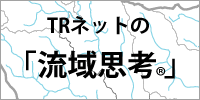岸由二 慶應義塾大学名誉教授 npoTRネット代表理事
2022年4月18日
DeepL無料版を利用した機械翻訳をつけます。
Translated with www.DeepL.com/Translator (free version)
Watershed Flood Control: Flood Control Measures in an Era of Climate Change Crisis
YUJI KISHI, Professor Emeritus, Keio University, Representative Director, npoTR net
April 18, 2022
2017年の7月九州北部豪雨、18年の西日本豪雨、19年の令和元年東日本台風、20年の令和2年7月豪雨と、毎年のように大規模な水害・土砂災害が発生している。こうした事態を受け、国土交通省は流域全体で水害を軽減する「流域治水」への転換を打ち出した。41年も前からこうした治水対策に取り組んできた鶴見川で市民活動に関わる筆者が、流域治水の過去・現在・未来を考察する。
Every year, large-scale floods and landslides have occurred, including the torrential rains in northern Kyushu in July 2017, the torrential rains in western Japan in 2006, the typhoon in eastern Japan in 2007, and the torrential rains in July 2020. The author, who has been involved in citizen activities along the Tsurumi River for 41 years, examines the past, present, and future of basin flood control.
限界を迎えた従来の治水対策
Conventional flood control measures reaching their limits
日本の治水対策が歴史的な転機を迎えた。2020年、国土交通省が、「流域治水」という方針を発表したからだ。ここにいう「流域」は、「氾濫原」のことではない。「氾濫原」は河川が運んだ堆積物によってできた平野で、豪雨などで川が溢れた際に水をかぶる低地のことだ。それに対して「流域」は雨の水を川に変換する地形、生態系を指す。これからの日本の治水は、「流域の構造・生態系と、そこで展開される人為的な利用全体を視野に入れて進めるべし」との方針が示されたのだ。しかし、そもそも水害や土砂災害は、豪雨時に大量の雨水が流域に集まってくるために発生する現象だ。「治水は流域で進めるべし」という方針が、なぜ今、歴史的転機になるのか。説明が必要だろう。
Japan's flood control measures have reached a historic turning point: in 2020, the Ministry of Land, Infrastructure, Transport and Tourism (MLIT) announced a policy called "watershed flood control. The term "watershed" here does not refer to "flood plains. A flood plain is a plain created by sediments carried by a river, and is a low-lying area that is flooded when a river overflows during heavy rains. A "watershed," on the other hand, refers to the landforms and ecosystems that convert rainwater into rivers. The policy of the plan was that Japan's future flood control should "take into account the structure and ecosystem of the watershed, and the human use of the watershed as a whole. However, floods and landslides occur when large amounts of rainwater collect in watersheds during heavy rains. Why is the policy that "flood control should be carried out within a watershed" now a historical turning point? An explanation is in order.
Conventional flood control measures reaching their limits
従来の治水対策は、河川法に基づく河川・水系の整備・管理と、下水道法に基づく水道諸施設の整備・管理を基本とするものだった。河川・水系も、下水道施設も、流域の一部にすぎない。流域内には緑地、農地、都市域の諸施設があり、豪雨の際、雨水はそれらを含む流域全体から集まる。
Conventional flood control measures were based on the development and management of rivers and water systems in accordance with the River Law and the development and management of water supply facilities in accordance with the Sewerage Law. Rivers, water systems, and sewerage facilities are only part of a watershed. Within a watershed, there are green areas, farmlands, and urban facilities, and during heavy rains, rainwater is collected from the entire watershed, including these areas.
従来の方式では、流域の土地利用に大きな自由度を与える工夫がなされてきた。氾濫・水害の制御を河川・下水道事業に集中させることによって、緑や農地の管理、居住・産業などの土地利用に関する治水上の制約を緩和させ、列島の急激な都市化を支えてきたのである。しかしこの分業方式が十分に機能しない事態に陥っている。河川・下水道整備事業への予算不足だけがその理由ではない。河川・下水道整備だけでは、気候変動がもたらすと予想される想定外の豪雨に対応しきれない危険性が高くなっているのである。
Conventional methods have been devised to provide greater flexibility in land use in the watershed. By concentrating the control of flooding and flood damage on river and sewerage projects, this has eased flood control restrictions on land use, such as the management of greenery and agricultural land, as well as residential and industrial use, and has supported the rapid urbanization of the archipelago. However, this division of labor is now failing to function adequately. Inadequate budgets for river and sewerage improvement projects are not the only reasons for this. There is an increasing risk that river and sewerage improvement alone will not be sufficient to cope with the unexpectedly heavy rains expected to be brought about by climate change.
緑地や水田の遊水効果を活用
Utilize the effects of green space and rice paddies for recreational water use
近年、日本列島は立て続けに大河川の豪雨水害、丘陵・山地における激甚な土砂災害に見舞われている。これを気候変動(温暖化)の表れと断定することはまだできないが、豪雨危機への新たな適応体制を構築すべき時が来たといった認識が急速に広がっているのは事実である。その具体的な表れが、温暖化豪雨時代に適応するための流域治水の提案となったのである。
In recent years, the Japanese archipelago has been hit by a series of torrential floods in major rivers and severe landslides in hilly and mountainous areas. Although it is not yet possible to determine that this is a real and valid sign of climate change (global warming), it is true that awareness is rapidly spreading that the time has come to build a new adaptation system to cope with the heavy rainfall crisis. The new Japanese version of manifestation of this is the proposal for watershed flood control to adapt to the era of global warming and heavy rainfall.
この新方式では、河川整備、下水道整備に加えて、流域内の緑の領域が提供する保水・遊水(ゆうすい)効果を活用する「グリーンインフラ」の整備、水田など氾濫原空間が提供する遊水効果に期待する「あふれさせる治水」などが強調された。そうして流域の地形・生態系、さらにいえばそこに展開する生活圏の整備・活用方式全体をもって温暖化適応をめざす方針が明確にされたのである。
In addition to river and sewage improvements, the new method also includes the development of a "green infrastructure" that takes advantage of the water retention and water utilization effects provided by the green areas within the watershed. The "landscape-based flood retarding " concept, which is based on the expectation of the floodplain space, such as rice paddies, to provide a flood control effect, was also emphasized. The policy of global warming adaptation through the entire development and utilization of the topography and ecosystem of the basin, and more specifically, the living areas that develop there, was clarified. In this way, the policy of global warming adaptation through the development and utilization of the topography and ecosystem of the watershed, and more specifically, the living areas that develop there, was clarified.
適応策としての目標は、以下の3点に要約される。
The goals for adaptation measures can be summarized in the following three points.
豪雨がもたらす洪水などの規模を抑制する
氾濫など災害の範囲を制限する
被災後の復興を円滑にする
Control the magnitude of floods and other disasters caused by torrential rains
Limit the extent of flooding and other disasters
Facilitate post-disaster reconstruction
関連法の改定なども進められており、全国109の1級水系の主要な河川については、すでに「流域治水対策プロジェクト」という名称で、初発の流域治水計画も公表された。しかし、どの計画もまだ、「河川・下水道の整備」「グリーンインフラ計画」「あふれさせる治水計画」「都市計画そのものの見直し」を含む総合計画の形にはなってはいない。これから逐次改定を経て、いずれは流域治水促進法のような総合法が実施されて、主要河川流域ごとの流域整備計画が法制化される展開になるのかもしれない。
Revisions to related laws and regulations are underway, and the first-ever basin flood control plans have already been published under the name "Basin Flood Control Measures Project" for the nation's 109 major Class A water systems. However, none of the plans have yet taken the form of a comprehensive plan that includes "river and sewerage improvement," "green infrastructure planning," "flood control plan for overflows," and "review of urban planning itself. After successive revisions, a comprehensive law such as the Law for the Promotion of River Basin Flood Control may eventually be implemented, and basin development plans for each major river basin may become the law.
すでに流域治水に取り組んできた鶴見川
Tsurumi River, which has already been working on watershed flood control
国全体ではこのような状況だが、実は、「総合治水」という呼称で、41年間にわたって「流域治水」を先取りし、成果を上げた1級水系がある。東京都と神奈川県の境界域を流れる鶴見川水系である。東京、川崎、横浜の中心地から半径30キロの領域に収まる流域を持つ同水系は、第2次大戦後、住宅利用を中心とする急激な開発圧にさらされることになった。
そして1970年代半ばの段階で、豪雨とも言えない雨量で数千軒の外水氾濫が発生する状況となり、通常の河川、下水道整備による治水が限界に達する事態に直面した。さらなる開発も不可避といった状況のもと、当時の建設省(現・国土交通省)河川局は、河川・下水道整備の強化に加えて、保水地域の緑の保全、水田の遊水地利用、一定規模を超える開発行為に伴う雨水貯留施設の設置などを柱とする流域対策を、国、自治体が連携して推進する「鶴見川流域総合治水対策」を1980年にスタートさせた。名称を別にすれば、2020年の流域治水と原理的には同じ施策である。
While this is the situation in the country as a whole, there is actually a first-class water system that has been ahead of the curve in "basin flood control" for 41 years under the name of "comprehensive flood control," and has achieved results. It is the Tsurumi River basin(=watershed), which runs along the border between Tokyo and Kanagawa Prefectures. The Tsurumi River system, whose watershed is within a 30-kilometer radius of the centers of Tokyo, Kawasaki, and Yokohama, was subjected to rapid development pressure after World War II, mainly due to residential use.
By the mid-1970s, the area was flooded by thousands of homes due to rainfall that could not be called "heavy rainfall," and it was faced with a situation in which flood control by ordinary river and sewer management was reaching its limits. Under these circumstances, the River Bureau of the then Ministry of Construction (now the Ministry of Land, Infrastructure, Transport and Tourism) established the "Tsurumi River The Comprehensive Flood Control Measures for the Basin and the measures was launched in 1980. Apart from the name, it is in principle the same measure as the 2020 watershed flood control.
それから41年、鶴見川流域では、築堤、大浚渫(しゅんせつ)、大小5カ所の遊水地の設置を含む大規模な河川整備、大容量の雨水貯留管設置を含む下水道整備と並んで流域各地で緑の保全が進み、地域の開発行為に伴い大小5000を超える雨水貯留施設(=雨水調整池)も整備され、今日に至っている。
In the 41 years since then, the Tsurumi River watershed has undergone large-scale river improvement, including the construction of embankments, dredging, and the establishment of five large and small recreational areas, as well as sewerage system improvement, including the installation of large-capacity rainwater harvesting pipes, and green conservation has progressed throughout the watershed.
「鶴見川流域総合治水対策」は明快な成果を上げている。1950年、60年代には、2日間の流域平均雨量300ミリ規模の豪雨によって2万件規模の床下床上浸水被害があった。それが1990年以降,同規模の数回にわたる豪雨被害に遭っても外水氾濫のない流域となった。
In the 1950s and 1960s, heavy damage with the size of 20,000 houses inundated under and above floor level was caused by the average two-day rainfall of ca.300 mm, in the Tsurumi River basin. Since 1990, the basin has been free from river flooding even after several torrential rains of the same magnitude.
私見を述べれば、現在、鶴見川流域の治水は、50年に1度の豪雨でも大規模な外水氾濫の危険性がない状況と思われる。ダムがなく、広大な水田地帯もない典型的な都市水系という限定はあるが、41年間に及ぶ鶴見川流域における総合治水の経験は、今後、全国の流域治水を進める上で大いに参考となるに違いない。
In my opinion, the current flood control situation in the Tsurumi River basin is such that there is no danger of large-scale external flooding even in a once-in-50-year rainstorm. Although those history may not be applicable to other river basins because of the fact that the Tsurumi River is a typical urban water system with no dams and no vast rice paddies, the 41 years of experience in comprehensive flood control in the Tsurumi River basin will surely serve as a great reference for future flood control in watersheds nationwide.
さらにハードルが高い、温暖化豪雨時代の流域管理
Even higher hurdles, watershed management in an era of climate change
とはいえ、鶴見川流域における「総合治水」とこれからの「流域治水」は、施策として同一ではない。「総合治水」は急激な都市化に対応する都市流域対策であるのに対して、2020年に提示された「流域治水」は、都市河川、自然河川の区別なく、温暖化豪雨時代への適応策といった特命を帯びているからである。都市化に対応する治水計画であれば、100年から200年に1度発生すると予想される豪雨を想定した整備で対応可能だろう。しかし、温暖化豪雨時代の流域治水は、さらに大量の雨、局所的な極端豪雨、海面上昇や高潮までを視野に入れなければならない。
Nevertheless, "comprehensive flood control" in the Tsurumi River basin and the future "watershed flood control" are not identical as measures. Comprehensive flood control" is an urban watershed measure to cope with rapid urbanization, while "watershed flood control" presented in 2020 has a specific mission of adaptation to the era of global warming and heavy rainfall, without distinguishing between urban rivers and natural rivers. If the flood control plan is designed to cope with urbanization, it should be able to cope with the heavy rains that are expected to occur once every 100 to 200 years. However, flood control in the era of warming rainfall will have to take into account even greater amounts of rainfall, localized extreme rainfall, sea level rise, and storm surges. Watershed management in the era of warming and torrential rainfall is a hurdle much higher than the past to overcome.
現在、国交省は一部の重要河川について、想定最大豪雨(1000年に1度)時の浸水ハザードマップを公表している。流域治水は、これを視野に入れた防災、減災対策になるはずだ。試行、改定されてゆく流域治水対策プロジェクトは、鶴見川流域においても前例のない、国、自治体、民間の連携を必要とする、未曽有の作業となるはずである。
Currently, the Ministry of Land, Infrastructure, Transport and Tourism (MLIT) has published inundation hazard maps for some important rivers in the event of an expected maximum heavy rainfall (once in 1,000 years). Basin flood control should be a disaster prevention and mitigation measure with this in mind. The basin flood control project, which will be tested and revised, will be unprecedented in the Tsurumi River basin, and will require cooperation among the national government, local governments, and the private sector.
ちなみに鶴見川水系の河川整備基本方針は、150年に1度の豪雨を想定している。1000年に1度ではなく、150年に1度の豪雨でも、鶴見川流域は並走する多摩川が氾濫すれば、下流域での数メートルの水没が不可避となることが予想されている。想定最大豪雨時の下流域の予想水没水深は3~10メートル。そのような事態への適応を実現するための流域治水、その先をゆく流域環境の改善がどのような技術革新、流域連携、都市改造を必要とするのか、なお想像を絶するものがある。
Incidentally, the basic policy for river improvement of the Tsurumi River system assumes a torrential downpour once in 150 years, not once in 1,000 years, but even with a torrential downpour once in 150 years, the Tsurumi River basin is expected to inevitably be submerged several meters downstream if the parallel Tama River overflows at the same time. The expected submergence depth in the downstream area at the time of the expected maximum heavy rainfall is 3 to 10 meters. It is still unimaginable what kind of technological innovations, watershed cooperation, and urban reforms will be required to realize watershed flood control to adapt to such a situation and to improve the watershed environment beyond that.
鶴見川流域の総合治水の実践から教訓を引き出すとすれば、それは流域に関わる国、自治体、企業、市民の連携調整の重要さ、難しさになるかと思われる。流域治水の推進に関わる主体間の連携は、言うはやすく実行は難しいと、肝に銘じておく必要がある。
If lessons can be drawn from the practice of comprehensive flood control in the Tsurumi River basin, it is the importance and difficulty of coordination among the national government, local governments, businesses, and citizens involved in the basin. It is important to keep in mind that coordination among the various stakeholders involved in basin flood control is easier said than done.
鶴見川がこれまで取り組んできた総合治水はもちろんのこと、これから全国の河川で進む流域治水プロジェクトは、計画・実行のいずれにおいても、さまざまな主体の連携を要請する総合的・法的な枠組みがまだない。流域治水促進法とでも呼ぶべき法律ができ、全ての主要な流域ごとに、関係主体を統合し計画を進める組織が設立される時代が来るのだろうが、さて何年かかるのか。温暖化緩和策の推進への切迫した緊張感と、それに匹敵する使命感が、国の担当諸機関に今強く期待されるゆえんである。
In addition to the comprehensive flood control efforts that the Tsurumi River has been undertaking to date, there is still no comprehensive, legal framework that requires the cooperation of various stakeholders in both planning and implementation of river basin flood control projects that will be undertaken in rivers across the country. It will probably take years or more for a law to be enacted to promote basin flood control, and for an organization to be established in each major river basin to integrate the entities involved and promote planning. The sense of urgency to promote global warming mitigation measures is stressed all around the nation in Japan, and a comparable sense of mission are now strongly expected from the national government agencies to promote river basin flood control project.
岸 由二 KISHI Yūji
経歴・執筆一覧を見る
進化生態学者。慶應義塾大学名誉教授。同大教授を経て現職。理学博士。流域思考による防災・多自然都市創出をミッションとし、鶴見川、多摩三浦丘陵域で市民活動を推進。元・国土交通省河川分科会委員。鶴見川流域水委員会委員。NPO法人鶴見川流域ネットワーキング代表理事。著書に『生きのびるための流域思考』(ちくまプリマー新書、2021年)、『利己的遺伝子の小革命』(八坂書房、2019年)、『自然へのまなざし』(紀伊国屋書店、1996年)など。共訳書にリチャード・ドーキンス『利己的な遺伝子』(同、1991年)など。
Yūji KISHI
View full list of biographies and writings
Evolutionary ecologist. Professor Emeritus at Keio University. Formerly
a professor at Keio University. Doctor of Science. He has been promoting
citizen activities in the Tsurumi River Watershed and Tama-Miura Hills
area with the mission of creating a disaster-resistant and biodiversity-friendry
urban culture/structure based on watershed thinking. Formerly a member
of the National River Committee of the Ministry of Land, Infrastructure,
Transport and Tourism. He is a member of the Tsurumi River Basin Water
Committee and the representative director of the NPO Tsurumi River Basin
Networking. Author of "Watershed Thinking for Survival" (Chikuma
Primer Shinsho, 2021), "A Small Revolution of Selfish Gene" (Yasaka
Shobo, 2019), "A Gaze to Nature" (Kinokuniya Shoten, 1996), etc.
Co-translations include Richard Dawkins, The Selfish Gene (Ibid., 1991).<
/p>







